The goal of every TV unit cabinet at WLIVE is simple: to combine design with function. WLIVE has practical, long-lasting furniture that fits actual homes, whether you need a tiny piece for your bedroom or a big piece for your family room. The TV unit cabinets are made to fit in with the style of modern living rooms and manage modern media needs.
This article explains the distinctions between TV stands and cabinets, helps you look at different design styles, and shows you what works best for different rooms and ways of life. Let's get rid of the confusion once and for all.
What’s the Difference Between a TV Stand and a Cabinet?
To grasp what a TV unit cabinet is, you first need to know what it isn't. People often question, "What does TV stand for?" when they read about furniture, and no, it's not just short for television. A TV stand, or TV stand with no legs, is usually an open structure that holds your TV and may contain shelves or not much storage. It puts accessibility first and often shows off your devices.
A TV with a cabinet, on the other hand, has storage space within. This style feels more like furniture and typically has drawers or doors that hide wiring, remotes, or game consoles. Some variants, like the media cabinet with doors to hide the TV or the TV stand with doors to hide the TV, give electronics even more privacy.
People might call a TV stand a console or a media bench, but the main distinction is how much you want to show and keep. A tall TV cabinet with doors and drawers gives you space to keep everything in order. A huge TV stand keeps things light and open. Both do the same thing, but they help with distinct needs.

Common TV Stand Styles
There are many different styles of TV stands, from sleek modern pieces to beautiful traditional ones. People who live in modern homes generally prefer minimalist consoles made of light materials like pale wood or aluminum, with clean lines and open storage. Floating TV stands attach directly to the wall, which saves space on the floor and gives the room a clean look. They're great for apartments or rooms with limited square footage.
For people who want something different, styles like round-edged stands, wall-mounted units without legs, or sculptural statement pieces can give an artistic touch. These often need extra support from the walls, but they make a big visual impression. Corner hutches and mission-style cabinets are still popular in the traditional design.
Hutch units fit perfectly into corners and provide vertical storage. Mission-style stands, with their deep wood tones and slatted details, add a grounded, timeless look that works well in areas that are more traditional or heavily adorned.
Popular TV Cabinet Styles
There are many different models of TV cabinets that people like, from very useful ones to ones that make a statement.
- Wall-mounted cabinets with wraparound doors are great for open-plan living since they hide the screen and keep things looking orderly.
- TV armoires with drawers seem more like furniture and hide the TV completely when they are closed.
- Corner cabinets with hutches are still a must-have in family rooms. They combine display shelf and media storage without taking up too much space on the wall.
- People who live in bohemian or country-style homes like live-edge TV consoles because they give a natural, rustic look.
- People are also interested in hidden entertainment units. These generally have sliding or barn-style doors that let you quickly change them from a media hub to a fashionable focal point.
Some of these styles focus on hiding things and keeping things neat, while others focus on showing things off and adding character. This makes it easy to select a style that fits both your functional and aesthetic demands.

READ MORE: The Complete Guide to Different Types of TV Stands
Choosing the Right Style for Your Home
The layout of your room is the first thing to think about when choosing a TV cabinet type, but the most important thing is to blend function and mood. A small TV stand with built-in drawers or shelves keeps things organized and stops clutter from building up in a small bedroom.
A long console that matches the finishes of the dining chairs or built-in storage links the room together in an open living area. If your rooms already have a lot of color or pattern, use cabinets in neutral colors and smooth materials to keep the look balanced.
If you use the room as both a workspace and a guest room, a cabinet with hidden storage can help you stay flexible. A wall-mounted cabinet with doors that close, for instance, keeps technology out of sight when it's not in use, making the room feel calmer. Before you choose a TV and wall size, always measure them to make sure they fit with the flow of your furniture. The proper style doesn't only fit the room; it makes the place seem like it belongs there.
Function vs. Aesthetic: Finding the Right Balance
A sleek TV unit cabinet can look nice, but it can get messy quickly if it doesn't hold all you need. You also don't want to fill your living room with a cabinet that's overly big merely to hold a few cords. Think about how you will utilize it every day. Choose something with movable shelves and closed compartments if you like gaming, streaming, or surround sound. An article tv console can be all you need if your setup is simple.
What Features Should I Look for in a TV Cabinet or Stand?

Managing cords is one of the most significant things. It's important to keep cords out of sight, whether you have a corner entertainment center with a hutch or a TV stand that can hold more than one device. Look for slots or compartments on the back panel that are made for hiding power strips.
The material is also important. If you have kids or dogs, choose surfaces that are strong and long-lasting, like engineered wood or metal frames. Drawers that close softly and strong legs keep the furniture from tipping over and getting damaged.
Think about height too. When you sit down, experts say to put the middle of the screen slightly below eye level. That's normally around 42 inches from the floor to the middle of the TV. So, always question, "How tall should a cabinet or TV stand be?" How tall your couch is and how big your screen is will affect your answer.
READ MORE: How to Choose the Right Size TV Stand?
Frequently Asked Questions (FAQs)
Which is better for small spaces: a TV stand or a cabinet?
A TV stand is usually ideal in small spaces because it is lighter and doesn't take up as much room. But for small rooms that are messy, a TV unit cabinet is a great way to keep everything in order.
Are TV stands and cabinets compatible with wall-mounted TVs?
Yes, most kinds of TV unit cabinets can go well with TVs that are placed on the wall. The most important thing is to pick a style that fits the height and width of your screen and has useful storage space underneath.
What materials are best for TV stands or cabinets?
Wood, laminate, and powder-coated steel that lasts are best. These materials can withstand weight and wear effectively Don't use soft plastics or glass in places where a lot of people walk.
How tall should a TV stand or cabinet be?
It depends on how big your TV is and how high your couch is. When you sit down, the center of the screen should be at eye level, which is normally 40 to 45 inches off the floor.
Can I use a dresser or sideboard as a TV cabinet?
Yes, but make sure the surface can hold the weight of the screen and that it isn't too high. Dressers look good if they complement the other parts of your TV unit cabinet.
Conclusion
When choosing between a TV stand and a cabinet, it's truly about knowing your space, your habits, and your taste. Do you want something that looks good in a modern apartment or something that has a lot of space for a family room? The idea is the same whether you want a mission-style TV cabinet, a hidden TV entertainment center, or a TV unit cabinet with doors and drawers: make a configuration that works for how you live, not simply how it looks.
Ready to explore smart and stylish tv unit cabinet options for your home? Head over to WLIVE and find the one that fits your space just right.
READ MORE: Media Console or TV Stand: What's the Difference?

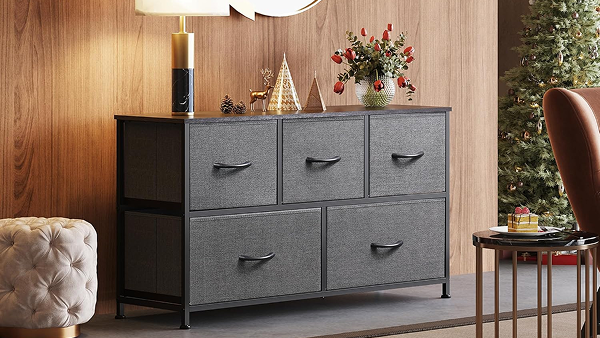
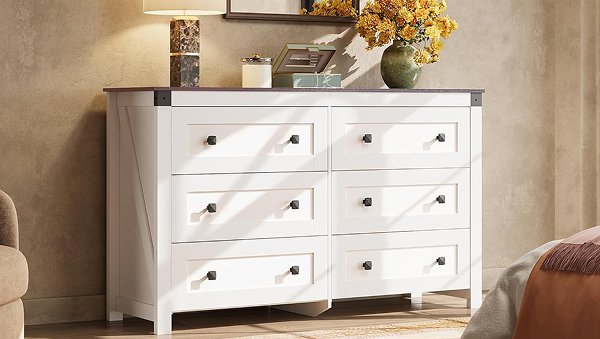
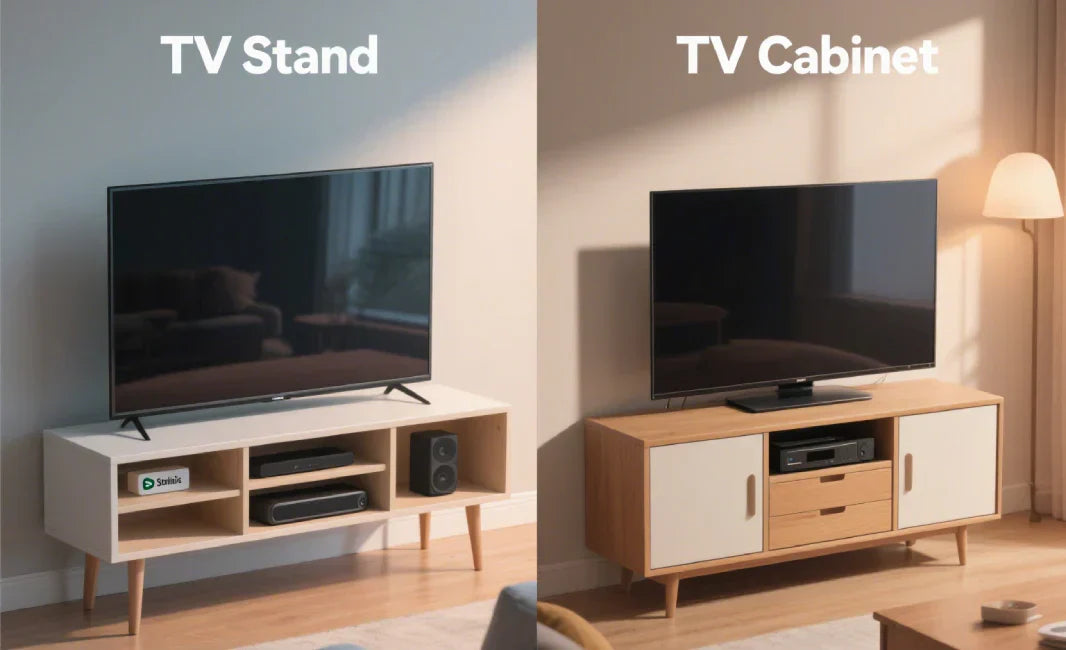
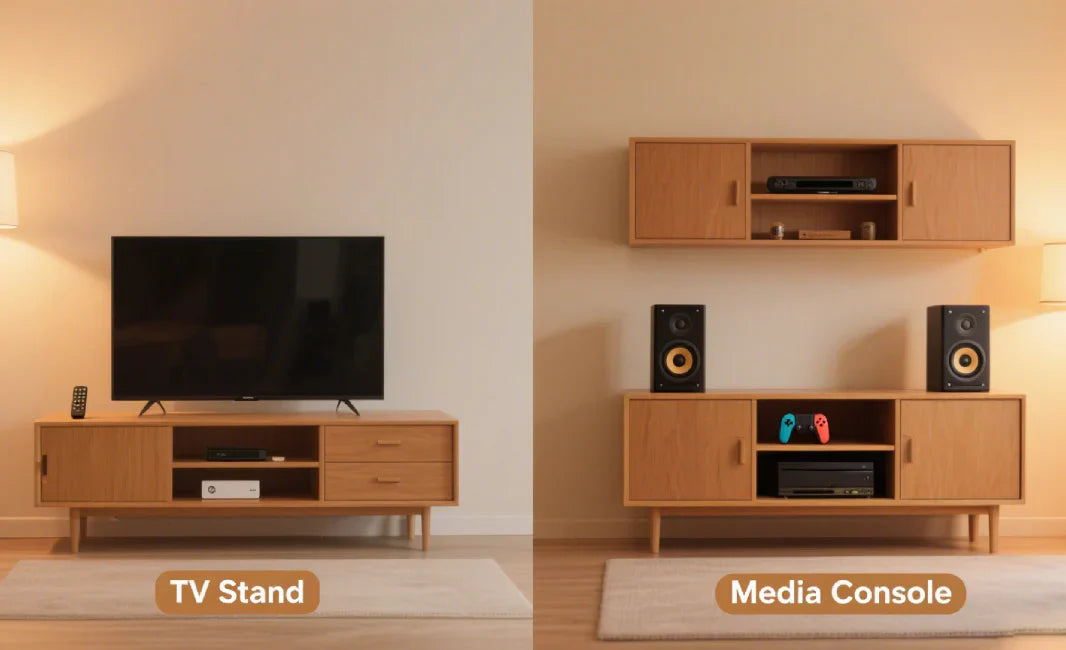
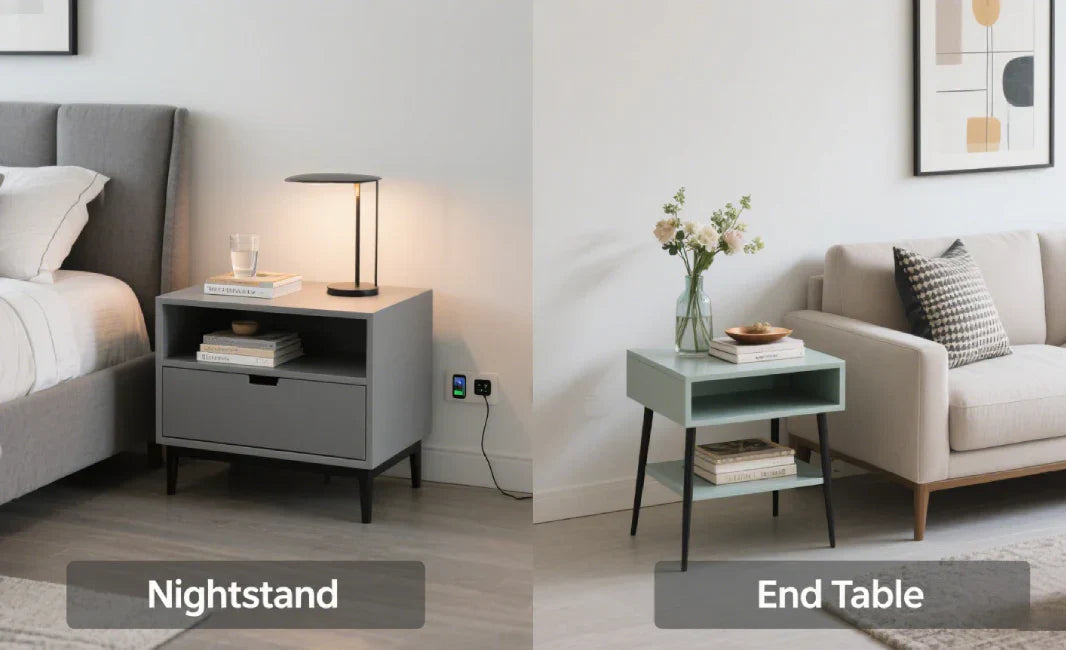
Leave a comment
All comments are moderated before being published.
This site is protected by hCaptcha and the hCaptcha Privacy Policy and Terms of Service apply.